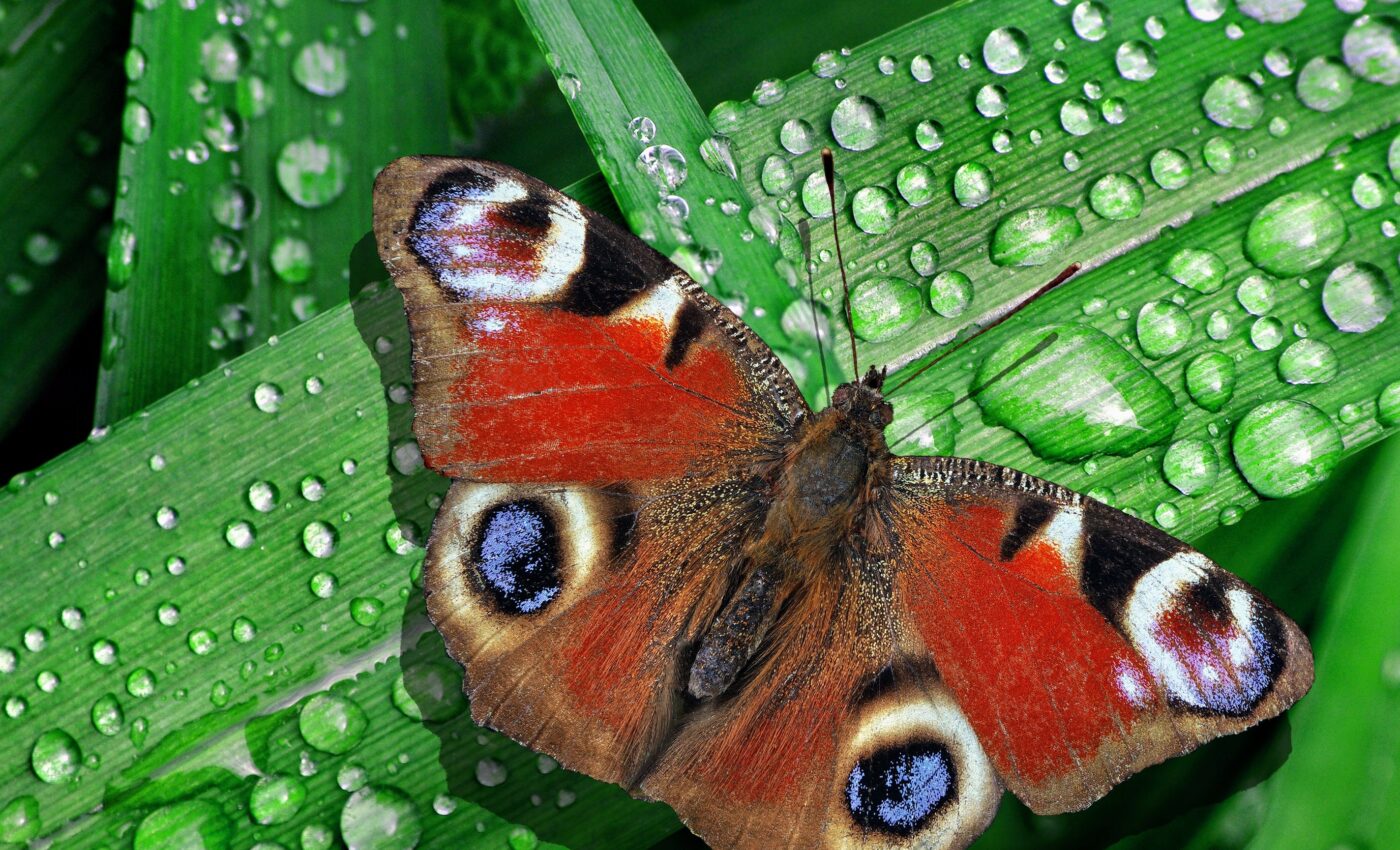
Eyespots on moth wings use optic illusion to deter predators
Many species of animals sport markings that subjectively appear to represent vertebrate eyes. These eyespots are conspicuous on the wings of butterflies and moths, on caterpillars, beetles, fish, reptiles and even some birds, and their potential functions have been discussed and debated by scientists for decades.
In some instances, large eyespots are thought to make an animal appear much bigger than it actually is, leading a predator to think twice about attacking. They are also assumed to protect a prey animal’s vital parts by directing the predator’s attention to the non-vital end (a prey is much more likely to survive a bite to its tail than its head). Most commonly, though, eyespots are assumed to appear intimidating to potential predators such that they choose not to attack at all.
Most of these hypothetical explanations suppose that predators actually see the paired spots as eyes, and not just as splashes of contrasting color that warn of toxicity or noxiousness. There are many conspicuous colors and patterns in the animal kingdom that are aversive to predators but look nothing like eyes – for example, the red and black patterns of certain locusts. Humans might perceive eyespots to look like eyes, but that doesn’t necessarily mean that predators do too. They may simply see ‘scary’ conspicuous markings.
In new research, John Skelhorn from the Biosciences Institute at Newcastle University, and Hannah Rowland from the Max Planck Institute for Chemical Ecology have tested whether eyespots are indeed perceived by predators as eyes. Furthermore, they investigated whether predators would respond more aversively to eyespots that faced them directly, appearing to glare menacingly at them, or to eyespots that faced away from them.
The researchers trained 126 domestic chicks (Gallus gallus domesticus) to run along a narrow 50 cm runway and peck a favorite prey item from the wall at the end. The prey item was initially a mealworm, but after the chicks were accustomed to pecking at the prey, the mealworm was subsequently covered with a triangular piece of grey paper representing wings. After a few days of training, all the chicks would run along the runway and attack the concealed mealworm within 2 seconds.
With the training complete, the researchers designed three alternative patterns to be placed on the paper wings. All the wings received a pair of markings that resembled eyes; the outside ring was white (against the grey background of the paper), while the inside circles were of darker grey, resembling an iris. On some of the wings, the iris was displaced to the left or right of the white circle, as though the eyes were looking to the left or to the right respectively. However, on others the iris was directly in the center of the white ring, as though the eyes were looking straight ahead.
Eyes that are depicted as staring straight ahead give rise to an optical illusion known as the Mona Lisa effect, after Leonardo da Vinci’s famously enigmatic painting. Such eyes appear to gaze directly at the observer, wherever he or she stands, be it to the left, right or in front of the staring eyes. Nature seems to have hit upon the same idea here, but in the animal kingdom it can be a matter of life or death. The researchers hypothesized that, if predators do indeed interpret eyespots as potential eyes, they will be more wary of eyespots that seem to stare directly at them.
The trained chicks were made to approach the prey from different angles by moving the runway into a left, central or right position. In addition, the eye spots on the prey’s wings either stared straight ahead or stared to one side, left or right. The researchers then timed how long it took a chick to approach and attack each type of ‘moth’ from each of the three directions.
The results, published in the journal Frontiers in Ecology and Evolution, show that chicks were slow to approach from the left when the moth’s eyespots were ‘looking’ to the left, and slow to approach from the right when the moth’s eyespots were ‘looking’ to the right. However, when chicks approached these moths from the opposite direction, there was no hesitancy and they ate the mealworm within about 20 seconds.
In the case of moths with concentric circle eyespots that appeared to gaze directly at the chicks, irrespective of the direction from which they approached, the time taken to eat the mealworm was between 100 and 170 seconds – some chicks failed to eat the prey at all, even though they were given up to 10 minutes to do so.
The researchers say their results show that the chicks perceived the artificial eyespots as actual eyes and that the eyespots were most effective when they appeared to gaze at the predator. This suggests that eyespots consisting of concentric circles could offer greater protection than eyespots with left- or right-shifted central circles in situations where individual predators approach from a range of different directions, just like the portraits that maintain eye contact from wherever you stand. They conclude that this probably explains why concentric circle eyespots are so common in nature.
Check us out on EarthSnap, a free app brought to you by Eric Ralls and Earth.com.
—
By Alison Bosman, Earth.com Staff Writer













